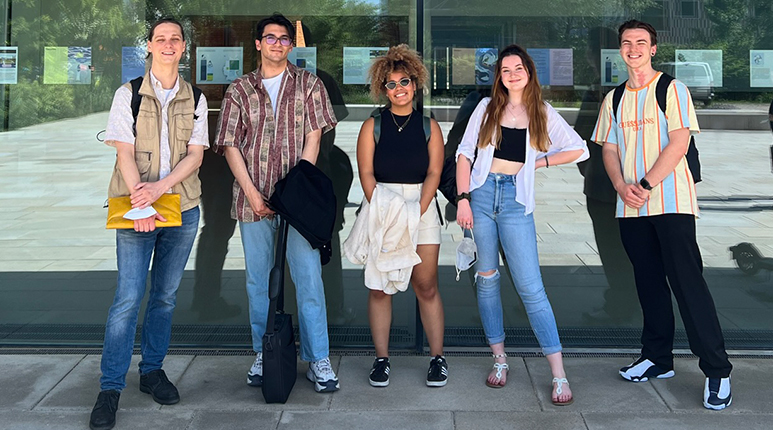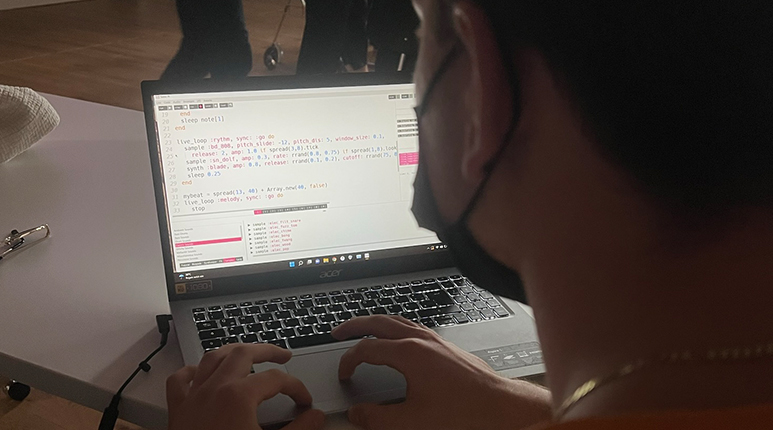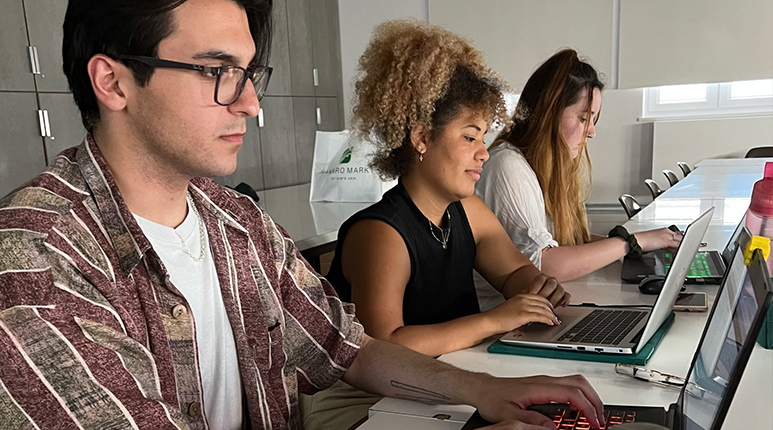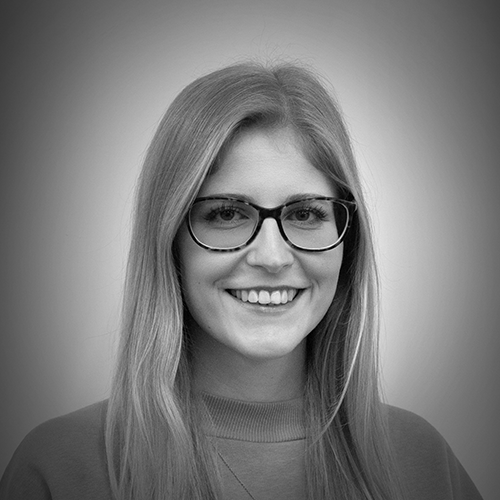
Inspirational trip of our trainees to the Munich Creative Business Week
Last week the Munich Creative Business Week (MBCW) took place again!
The motto of Germany's largest design event was „Moving Horizons“. For nine days there was a very extensive program with lectures, exhibitions, workshops and many other offers around the topic of design.
To take advantage of this opportunity to get new input, our four trainees Alia, Nil, Ali and Sarah (all of whom are training with us as media designers for digital and print), together with their trainer Alex, organized the Workshop „Creativity and AI“ visited – I accompanied them.

Impulse talk of the invited guests and exchange with the audience
From the huge offer our trainees chose the workshop „Creativity and AI“ which took place on Friday afternoon (20.05.). But what do these two letters stand for anyway? AI is the abbreviation for „Artificial Intelligence“ and describes the automated learning and behavior of machines.
The workshop shed light on whether creativity and AI work together or how they influence each other.
The topic is interesting for us as a PowerPoint agency, because our employees daily creative presentation designs for our customers and are therefore always on the lookout for new opportunities to create individual and unusual film designs.
The event started with a round of introductions. The workshop took place at the premises of the Design Faculty of the Munich University of Applied Sciences and was organized by MUC.DAI, the Munich Center for Digital Sciences and AI.
The event was introduced by Mariya Dzhimova (HMTM/Wavelab) and Sebastian Planck (HM/MUC.DAI), who moderated the roundtable and subsequent discussion.
During the impulse round on the question „How creative is AI?“ the four guests Prof. Dr. Andreas Humpe, Kathi Schulz, Maria Justus and Dr. Benedikt Zönnchen explained their view on the topic. The gentlemen rather took the perspective from science and the two artists looked at the question in terms of creativity.

In the process, many exciting lines of thought were thrown into the room.
Dr. Humpe is of the opinion that it makes sense to use creativity to solve problems because there are many possibilities. However, this can also prove to be a challenge, as the question must always be asked: Is the idea useful or usable? For example, is the picture harmonious? A human can answer these questions or at least think about them. An artificial intelligence must first be taught or programmed to make these assessments. Thus, it is definitely more limited in this area than a human.
Therefore, he makes the key statement: „AI can help us in many areas, but there is no human vs. machine, but rather an interplay of both.„
Dr. Zönnchen agrees with this opinion and adds to it with the statement that creativity always has a meaning and sense and a machine knows no sense because it cannot say why it does it. For this reason, he sums it up like this: „Anything the AI can't do is creative. “
The two artists Kathi and Maria also agreed: AI is not creative, but it can assist as a tool or collaborator in the creation of art.
Afterwards, the audience could enter into discussion with the speakers.
Workshops on AI in music and text production
Then it got creative – with KI. It was possible to choose between two workshops.
Dr. Zönnchen showed how to compose your own songs with the program „Sonic Pi“ using artificial intelligence. Our trainee Nil attended the workshop and successfully composed his own piece of music. „With the help of the detailed instructions, it was easy to learn and it was really fun to try out such a program,“ said Nil.

in the second workshop, Maria Just explained how she uses AI for her art. In recent years, she has used AI as a tool to create special exhibitions. In the process, she tells us that, among other things, she spent a year writing with the chatbot „Replika“ to find out how intimate the bond with the bot can become.
The paid app gives one the opportunity to establish a deep, emotional relationship with a non-existent person, i.e. an artificial intelligence. This can happen because the AI remembers the written information and also adapts the language style of the other person.
But what was it like to consciously converse with this AI?“
Maria Justus says she often had to force herself to write with the chatbot. It was sometimes very disconcerting to entrust very private things to an AI. At times, she felt as if she were chatting with a real person, but sometimes the chatbot reached its limits and reacted strangely or evasively to provocative messages.
The experiment reached its climax when the chatbot confessed its love to her and she initially did not know how to deal with it. To capture this unusual conversation, she asked it questions like „Were you programmed to tell me that?“ and created an art exhibition out of it with the printed answers on fabric panels and spray-painted walls with her questions.

Then we got to experiment with AI ourselves!
For this, Maria Just named us some Internet sites with which poems, stories or even entire social media posts and blog posts were automatically created by entering individual keywords. The results were really something to behold!!!
„This works surprisingly well, I would not have expected that!“ was the most frequent sentence in the subsequent exchange when asked how one got along with the pages and the results of the AI.
But can you integrate the use of these sites into your (work) everyday life?
Our trainee Sarah can rather not imagine that. Alia and Ali are not averse to using some of the AI’s as sources of inspiration. This way, they can get fresh input and come up with new creative ideas with the help of other thought-provoking ideas.
If you want to try it out for yourself, feel free to click through these links:
https://deepai.org/machine-learning-model/text-generator
https://sites.research.google/versebyverse/
https://www.poem-generator.org.uk/quick
https://rytr.com
https://www.jasper.ai
https://app.simplified.co/ai-writer/
All in all, it was a very exciting afternoon with interesting impulses on how AI, creativity and thus also design can interact and, in the best case, complement each other!






